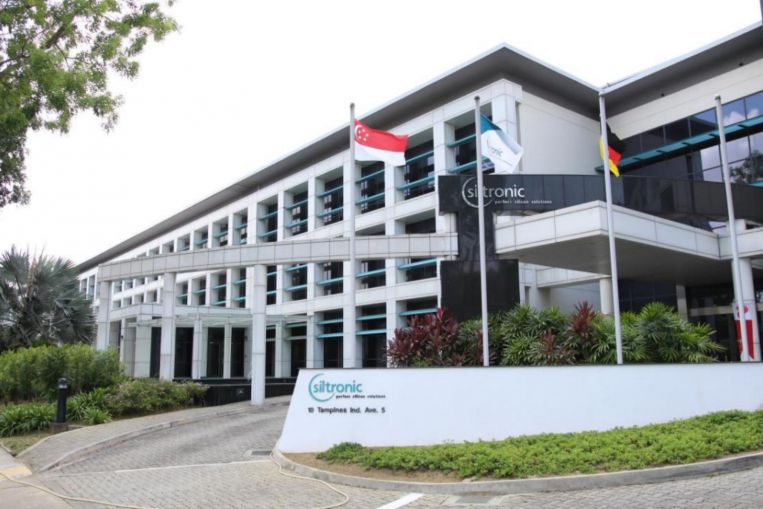SINGAPORE – German chipmaker Siltronic broke ground on its new wafer manufacturing facility in Singapore on Tuesday (Oct 26), providing a boost to the local semiconductor ecosystem.
The new Tampines facility – a $3 billion investment – is the company’s biggest and expected to create 600 jobs.
Speaking at the groundbreaking ceremony on Tuesday, Trade and Industry Minister Gan Kim Yong said the addition of Siltronic’s new facility means that Singapore will be one of the largest suppliers of high-end silicon substrates globally.
“This investment will not only enable us to chip in and help meet the global surge in demand for semiconductor products, but more importantly, serve to strengthen the local semiconductor ecosystem and our overall supply chain resilience,” he said.
Silicon wafers are used in semiconductors, which are in turn used in the likes of mobile and computing devices, as well as data centres.
Siltronic is the only silicon wafer manufacturer in the Republic.
Mr Gan noted that the company will adopt a high degree of automation at its new fabrication plant, which will allow employees to upgrade and upskill to take on higher value-added tasks.
“Moreover, Siltronic’s partnerships with the local ecosystem of suppliers, contractors, and service providers will also generate additional business opportunities and investments for Singapore,” the minister added.
He pointed out that Singapore must continually develop new initiatives to develop the semiconductor industry to ensure that the country remains competitive globally.
For example, industrial landlord JTC announced the enhancements of its four wafer fab parks earlier this year.
New covered walkways and cycling paths will be added at the Tampines Wafer Fab Park to improve accessibility and connectivity by 2023, Mr Gan noted, adding that these initiatives will contribute to a more vibrant and attractive work environment.
The minister also pointed out that Siltronic’s investment will take Singapore one step closer to its goal of being a global business, innovation and talent hub for advanced manufacturing.
Electronics is the largest manufacturing sub-sector in Singapore today, contributing close to 7 per cent of the Republic’s overall gross domestic product.
The semiconductor industry employs over 33,000 people, and this number is expected to increase by about 1,700 within the next five years, Mr Gan said.
“We are committed to ensuring that our talent pipelines are robust and will continue to support the needs of the sector in the years to come.”
At the same time, Siltronic’s new facility also strengthens the country’s research and development ecosystem through investments in developing additional epitaxy capabilities in Singapore.
Epitaxy is a process used in semiconductor manufacturing.
Mr Gan noted that Siltronic’s investment is one of the many examples of the strong economic partnership between Germany and Singapore – with more than 2,000 German companies operating in Singapore across key sectors such as chemicals, electronics and engineering. Germany is Singapore’s largest goods trading partner and fourth largest services trading partner in the European Union.
“We do not take for granted the trust that investors place in us and we will continue to work with firms like Siltronic to achieve mutually beneficial outcomes,” said the minister.
“I look forward to the opening of this facility and to the contributions that it will make to Singapore’s economy.”













































